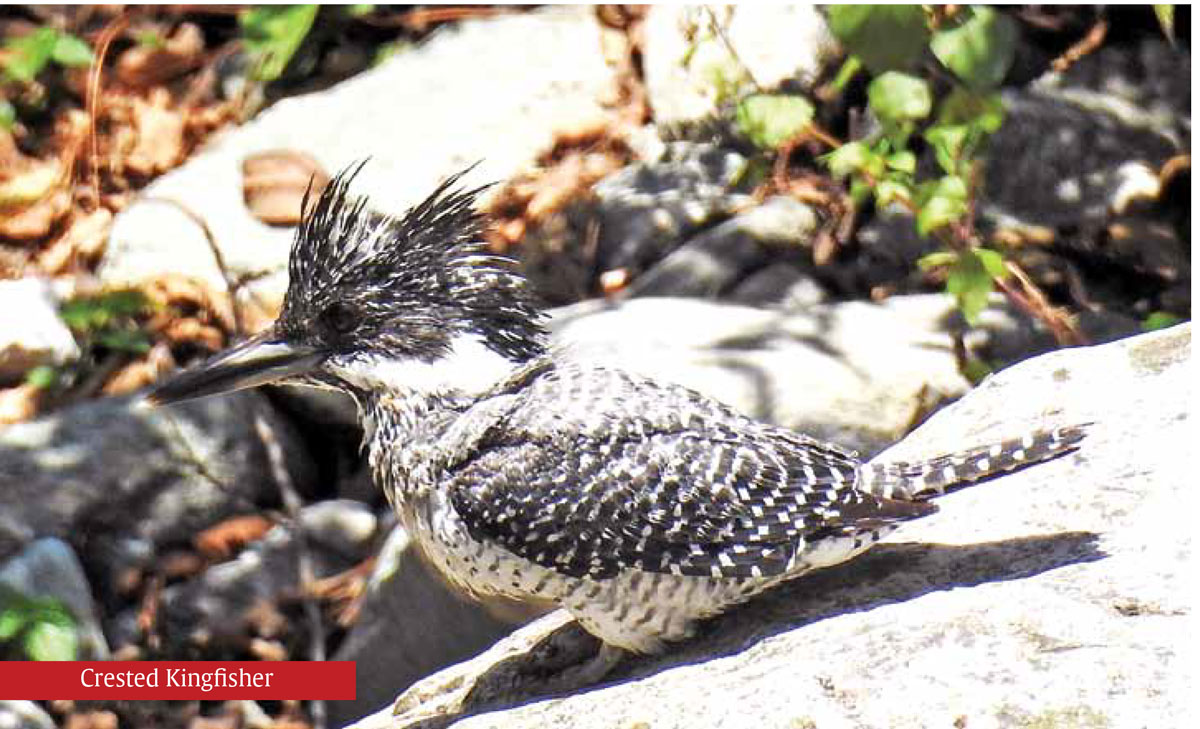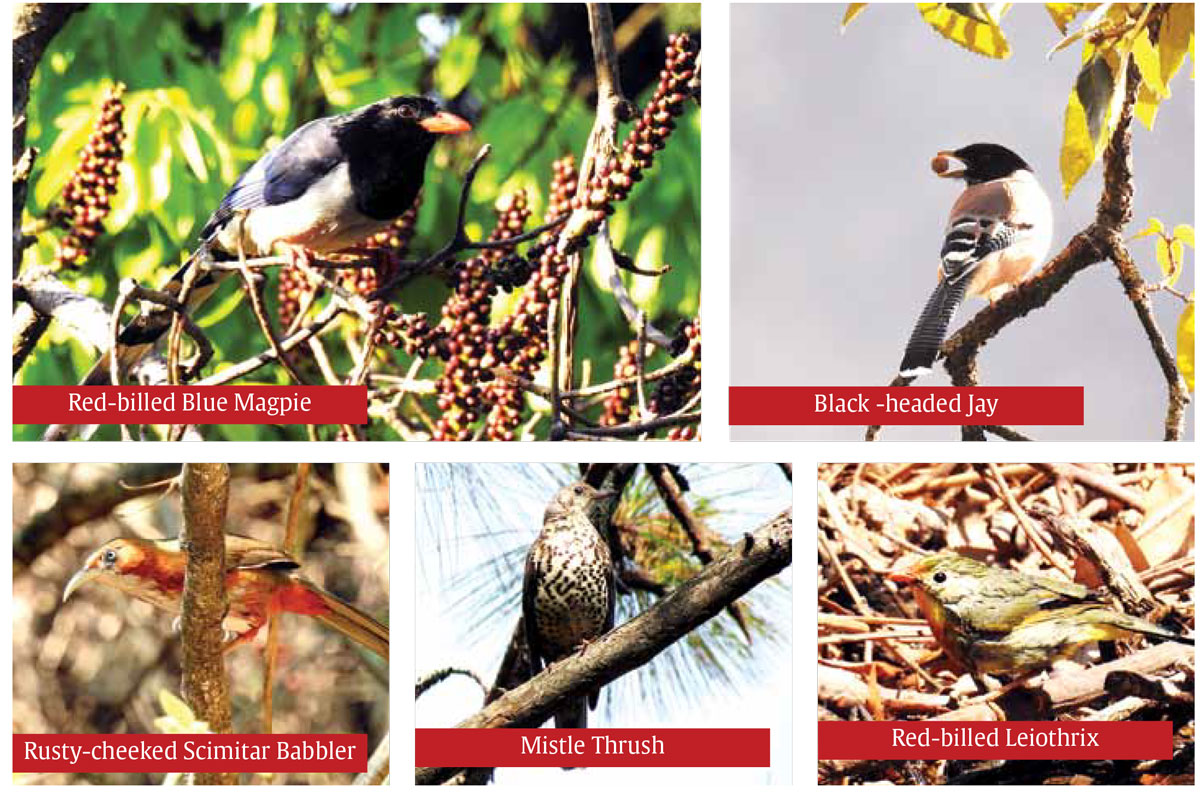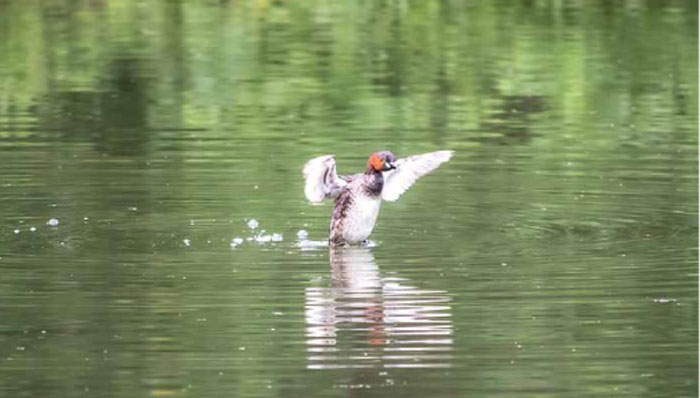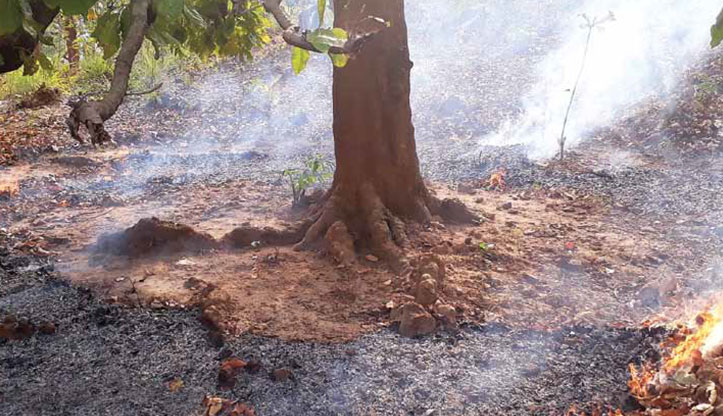
Endemic and Range-Restricted Birds Species of Sattal and Pangot, Nainital
By Dr. Sangeeta Rajgir, Mohd. Khalique
Studies on overall bird community in the Indian Himalayas are few. However, species-specific studies have been conducted in the Western and Eastern Himalayas. Other than Ali & Ripley (1987), Shankar (1995) studied the impact of shifting cultivation on bird community in Mizoram while Singh (1994) compiled a checklist of Arunachal Pradesh.
Katti et al. (1992) conducted an ornithological survey in eastern Arunachal Pradesh. Katti (1989) studied the bird communities of the lower Dachigam valley in Kashmir. Mainly pheasants have been studied at the species level. Gar-son et al. (1992) and Kaul (1993) studied the ecology and conservation of Cheer Pheasant Catreus wallichii. Saklaniet al. (1989) worked on the habitat utilization and behavioral ecology of the Kaleej Lophura leucomelanos in the Garhwal Himalaya. Sathyakumar et al. (1993) collected information on the ecology of the Kaleej and Monal Lophophorus impejanus in the Kedarnath Wildlife Sanctuary.
Ahmed & Musavi (1993) studied the ecology of the Kaleej at Ranikhet in Kumaon. Asad et al. (1994) surveyed Limber valley to study the Western Tragopan Tragopan melanocephalus and its habitat. Khaling (1998) studied the ecology and conservation of the Satyr Tragopan Tragopan satyra in Singhalila National Park, Darjeeling. Datta (1998) studied the hornbills in Arunachal Pradesh.
Because of the lack of systematic information on the avian community of the Kumaon Himalayas Endemic and Range-Restricted bird, data is not properly upgraded, specially in the avian hot spot of Sattal and Pangot. In this article we focus on some of the endemic avifauna species of the region. Sattal and Pangot are towns situated in the Nainital (Kumaon) District of Uttarakhand, India. Due to its rich birdlife as well as ease of access both these places are popular among birders as well as tourist. Geographically, the Nainital (Kumaon) district is divided into 2 main zones namely, the Lesser Himalayas (also known as Krol) and Shivalik (also known as Bhabhar).

The highest peak of the district is Naini Peak (2619m asl). River Kosi arising out of Koshimool near Kausani flows on the western side of the district. There are a number of smaller rivulets like Gaula, Bhakra, Dabka, and Baur. The district covers the tropical, subtropical, temperate, subalpine and alpine zones. The deep valleys with an elevation of up to 1000 Mts. play host to flora and fauna typical of hills as well as plains. While elevation between 2000m-2500m represents the flora and fauna from Lesser Himalayas and subalpine region. (Manakadan & Khan 2020).
The Sattal and Pangot regions fall under the Siwalik Hills/ Outer Himalayas and the Lesser/Middle Himalayas of the Central Himalayan Range. The Siwalik mountain ranges constitute the southern most stretch of hills in the Himalayan Range that abut the Indo- Gangetic plains. They are a range of low hills which are mostly unstable due to unconsolidated landmass. The Shivalik’s sub-humid regions have fragile geology and geomorphologic changes are rapid. The broadleaf forest of the Lesser Himalayas continues into these foothills. The habitat consists mostly of Oak and rhododendron forest with patches of pine and grassy slopes. (Manakadan & Khan 2020 and Yadav et. al. 2015).
Pangot town is situated 16 km to the North-East of Nainital, on the Kilbury road. The Pangot region mentioned in the publication refers to the hills and area surrounding the Pangot town. The region includes parts of the Naini Range, including the Kilbury forest (29°25’12N 79°26’21E), Vinayak Grassy slopes (29°28’1N 79°23’25E), Kunjkharak Forest Guest House (29°30’13”N 79°19’8” E), Ghuggu Kham (29°30’13N 79°19’8E); and also the low lying area around Shaolin Gurukul (29°25’29N 79°23’31E). The altitude of this region ranges between 1500 and 2600 m, while Pangot town is at 2035 m above sea level. The climate can be described as warm and temperate and is known to receive snowfall in winter. The region is dominated by Rhododendrons and mixed oak forest. However, parts of it are covered by pines.
The region shows abundance in Pheasants, Picidaes, Turidaes, Accipiters, Fringillidaes and Sittidaes. The SattalChafi region includes parts of the Bhowali Range of the Lesser Himalayas, including areas of Sattal (29°20’54”N 79°31’58” E), Bhimtal (29°20’44” N 79°33’29”E), Chaffi (29°22’5”N 79°34’26” E), Gaula River (29°21’49”N 79°35’10”E), and Kaichi Dham (29°25’20”N 79°30’42”E). The altitude of this region ranges between 1300 and 2000 m, while Sattal town is at 1430 m above sea level. The climate of the Pangot region can be described as warm and temperate, The region is dominated by mixed oak forest with few pine patches. The area also shows extensive growth of invasive species like Parthenium and Lantana. A total of 400 species of birds have been recorded in this area . In these species some birds is Range Restricted or Endemic to the region.
Endemic or range restricted birds are those whose distribution is restricted to a defined area or region. Some of the important bird species which are endemic or range restricted includes Tawny.

Fish-Owl (Ketupa flavipes), Brown-fronted Woodpecker (Dendrocoptes auriceps), Himalayan Woodpecker (Dendrocopos himalayensis), Scaly-bellied Woodpecker (Picus squamatus) Collared Falconet (Microhierax caerulescens), Slatyheaded Parakeet (Psittacula himalayana), Eurasian Jay(Garrulus glandarius), Black-headed Jay (Garrulus lanceolatus), Yellow-billedBlue-Magpie (Urocissa flavirostris), Red-billed BlueMagpie (Urocissa erythroryncha) , Common Green-Magpie (Cissa chinensis), Yellowbilled Chough (Pyrrhocorax graculus), Fire-capped Tit (Cephalopyrus flammiceps), Rufous-naped Tit (Periparus rufonuchalis), Rufous-vented Tit (Periparus rubidiventris), Himalayan Black-lored Tit (Machlolophus anthogenys), Blackchinned Yuhina (Yuhina nigrimenta) Black-chinned Babbler (Cyanoderma pyrrhops), Streak-breasted Scimitar-Babble (Pomatorhinus ruficollis), White-browed Scimitar-Babbler (Pomatorhinus schisticep), Streaked Laughingthrush (Trochalopteron lineatum), Variegated Laughingthrush (Trochalopteron variegatum) Blue-winged Minla (Actinodura cyanouroptera), White-crested Laughingthrush (Garrulax leucolophus), White-throated Laughingthrush (Pterorhinus albogularis), Dark-sided Thrush (Zoothera marginata), Mistle Thrush (Turdus viscivorus), Bluethroated Flycatcher (Cyornis rubeculoides), Slaty-backed Forktail (Enicurus schistaceus), Golden Bush-Robin (Tarsiger chrysaeus), Blue-capped Redstart (Phoenicurus coeruleocephala), Fire-tailed Sunbird (Aethopyga ignicauda) etc.
The major threats to these species in this area is unmanaged tourism and lack of community participation in conservation of birds species. If we involve local community in awareness programs about species found in there nearby forest and villages and how to conserve them it shows better result in near future. For unmanaged tourism there should be a restriction from local tourism department for tourist that they not enter in birding areas without local guides. There should be a proper action plan for conservation of these species in near future.




